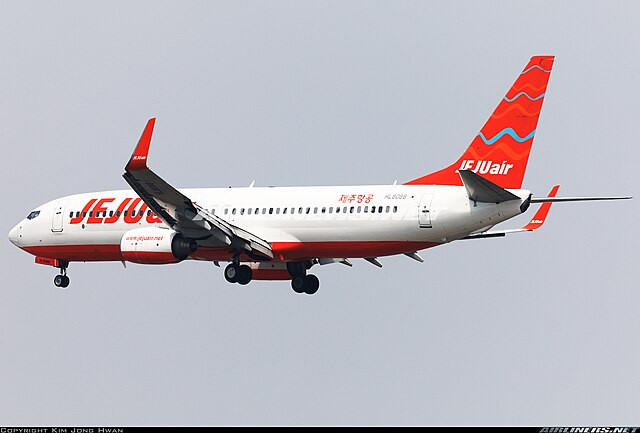South Korean authorities have intensified their investigation into Sunday's devastating plane crash by raiding the offices of Jeju Air and the operator of Muan International Airport. The crash of Jeju Air Flight 7C2216, which killed 179 people, is among the worst aviation disasters in the country's history.
The Boeing 737-800 aircraft, carrying 181 passengers and crew from Bangkok to Muan, overshot the runway during an attempted landing, skidded into an embankment, and burst into flames. Only two flight attendants, seated at the rear of the aircraft, survived but sustained injuries.
Police confirmed that searches were conducted at Jeju Air's headquarters in Seoul, the offices of Muan International Airport, and the local transportation ministry aviation authority. Officials are seeking records related to the aircraft's maintenance, the airport's operational procedures, and other potential safety violations. Jeju Air has stated its willingness to cooperate with the investigation, according to a statement released to the media.
Key aspects of the investigation focus on the embankment at the end of the runway, which supports a localizer antenna used to guide landings. Experts have criticized the embankment's rigid concrete design, with some suggesting it exacerbated the crash's severity. "This rigid structure proved catastrophic when the skidding aircraft made impact," said Najmedin Meshkati, an engineering professor at the University of Southern California. He added that such antennas are typically mounted on lighter, more flexible structures to minimize damage in case of accidents.
The South Korean Transport Ministry is inspecting similar localizer installations at other airports nationwide. Deputy Transport Minister Joo Jong-wan acknowledged public concerns but has not disclosed detailed plans for addressing infrastructure risks at Muan or elsewhere.
Investigators from the U.S. National Transportation Safety Board (NTSB), Federal Aviation Administration (FAA), and Boeing are assisting their South Korean counterparts. The flight's data recorders, one of which sustained damage, have been sent to the United States for analysis. The cockpit voice recorder, successfully converted into audio files, is expected to provide critical insight into the crew's actions and decisions during the final moments.
Preliminary findings indicate that the aircraft's landing gear was not deployed, prompting questions about mechanical failure, pilot error, or external factors such as the reported bird strike. Investigators are scrutinizing communications between the pilot and air traffic control, where the crew had declared an emergency prior to the crash.
South Korea's acting president, Choi Sang-mok, called for immediate action to address safety concerns surrounding the Boeing 737-800. "As there's great public concern about the same aircraft model involved in the accident, the transport ministry and relevant organizations must conduct a thorough inspection of operation maintenance, education and training," he said during a disaster management meeting. Choi also emphasized the importance of providing support to victims' families as they mourn their losses.
Witness accounts and video footage revealed the horrifying sequence of events as the plane careened off the runway and erupted into flames. The embankment's placement and design are now central to discussions about whether the structure's materials should have been less rigid to mitigate impact.
The crash has led to a seven-day period of national mourning in South Korea. Families of the victims have visited the crash site to pay their respects, while public outrage has mounted over perceived lapses in aviation safety standards. Authorities have pledged a transparent and comprehensive investigation to prevent such tragedies in the future.






